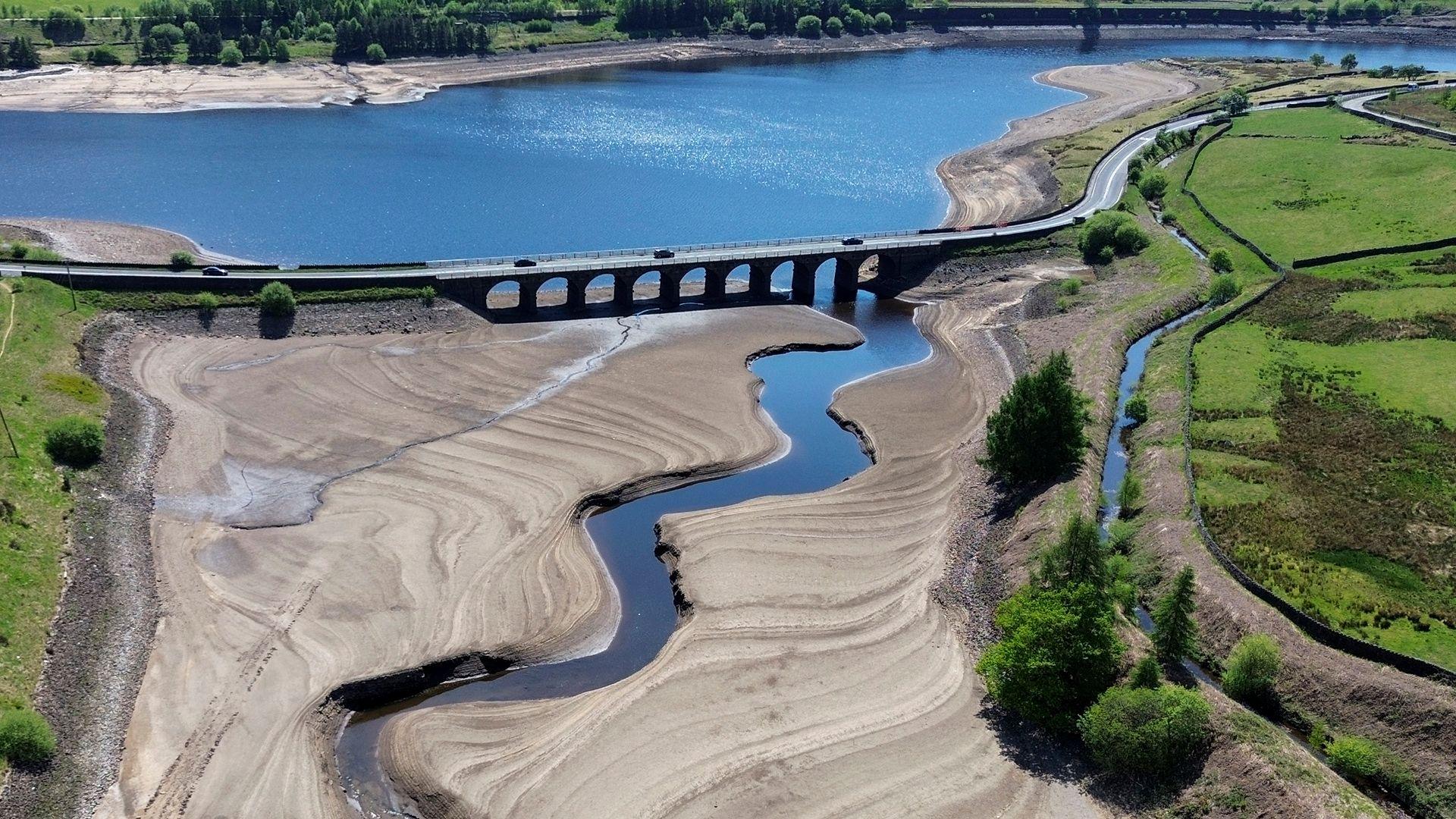Why is it so difficult to build new reservoirs?
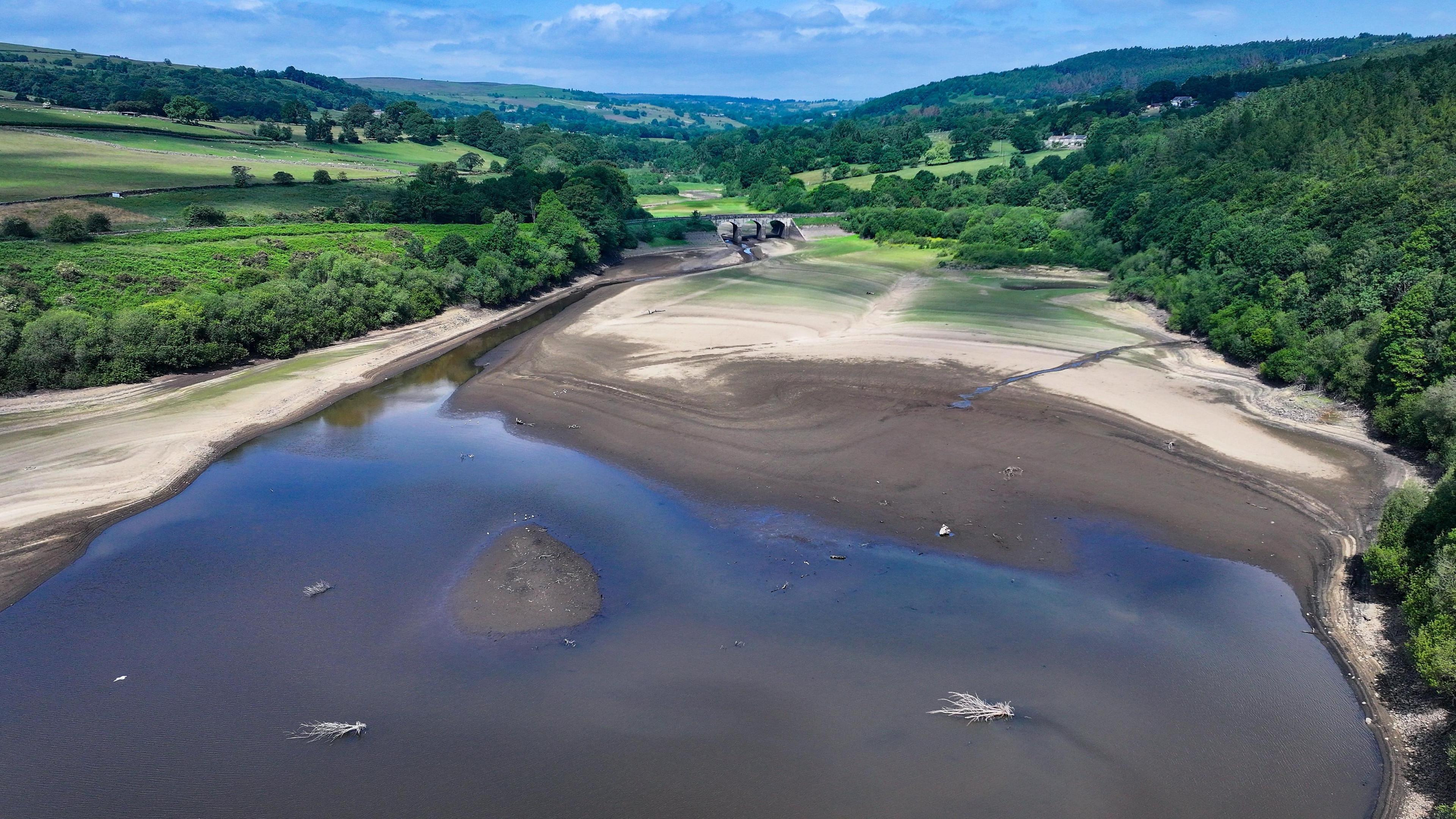
Yorkshire's reservoirs, such as Lindley Wood near Otley, are running dry
- Published
After the country's warmest and driest spring for more than 50 years, Yorkshire's reservoirs are now almost half empty.
Yorkshire Water, which manages 120 reservoirs, said water stocks were around 55% after England's warmest June on record, compared to a summer average of 81%.
Reservoirs help protect against water shortages during droughts by collecting excess rainfall during wet periods.
In the current drought, questions have been asked about why we cannot build more of them to future-proof supplies for a growing population.
There were major reservoir building projects in Yorkshire in the 1960s, when Thruscross near Harrogate was constructed, and 40 years ago, when Grimwith in the Dales was expanded - although the original reservoir on the site dated back to 1864.
Last year the government announced proposals to build nine new reservoirs by 2050, but none are likely to be operational for at least 10 years.
No major reservoirs have been completed in England since 1992, shortly after the water sector was privatised.
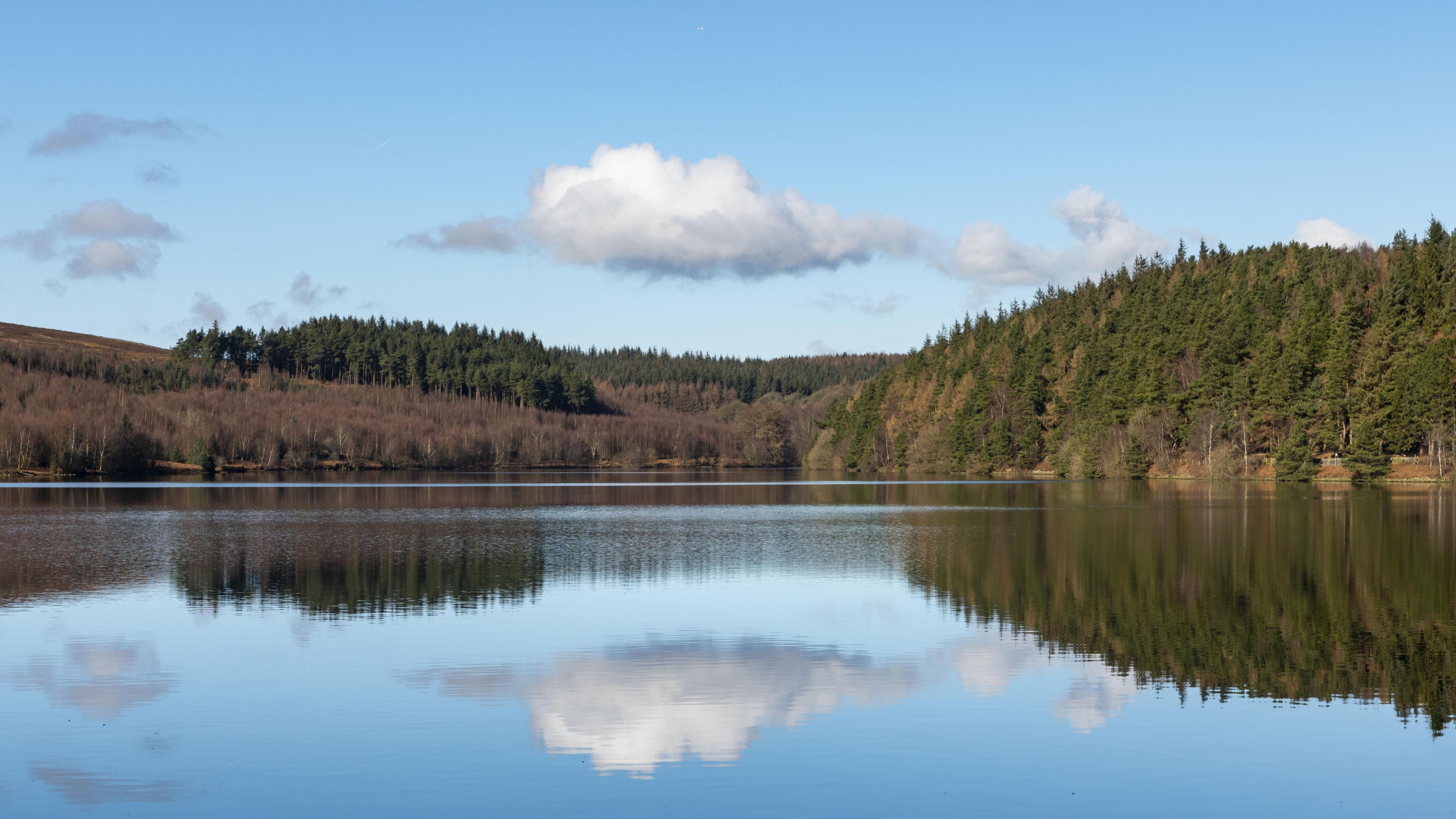
Langsett Reservoir, in Sheffield, was completed in 1904
Many of the largest sites were developed during the Victorian era, when the country rapidly industrialised and the urban population increased. City corporations - the forerunner to modern councils - purchased land in rural areas to flood, often displacing entire villages whose residents were forced to relocate.
Grimwith, near Pateley Bridge, was one of 11 reservoirs built by the Bradford Corporation to supply the growing city, and Leeds Waterworks Company invested in labour-intensive projects in the Washburn Valley, where Swinsty, Fewston and Lindley Wood were built in the 1870s.
In South Yorkshire, Langsett Reservoir, completed in 1904, supplies Sheffield and Barnsley, and the Sheffield Waterworks Company also built a group of four reservoirs in the Bradfield area in the late 19th Century.
Ownership of these sites eventually passed to Yorkshire Water.
Dr Kevin Grecksch, associate professor of water science, policy and management at the University of Oxford, said the idea of "locking" water in storage areas was ancient and had been practised since agriculture first developed.
Farmers would manage their own small-scale reservoirs before large public works commenced during the Industrial Revolution.
"A lot of this happened in the Midlands and Yorkshire, where the textile mills, steel and coal mining and pottery industries all needed enormous amounts of water," he said.
After World War Two, there was a second wave of reservoir construction.
"Cities like Liverpool and Manchester had growing populations and needed water."
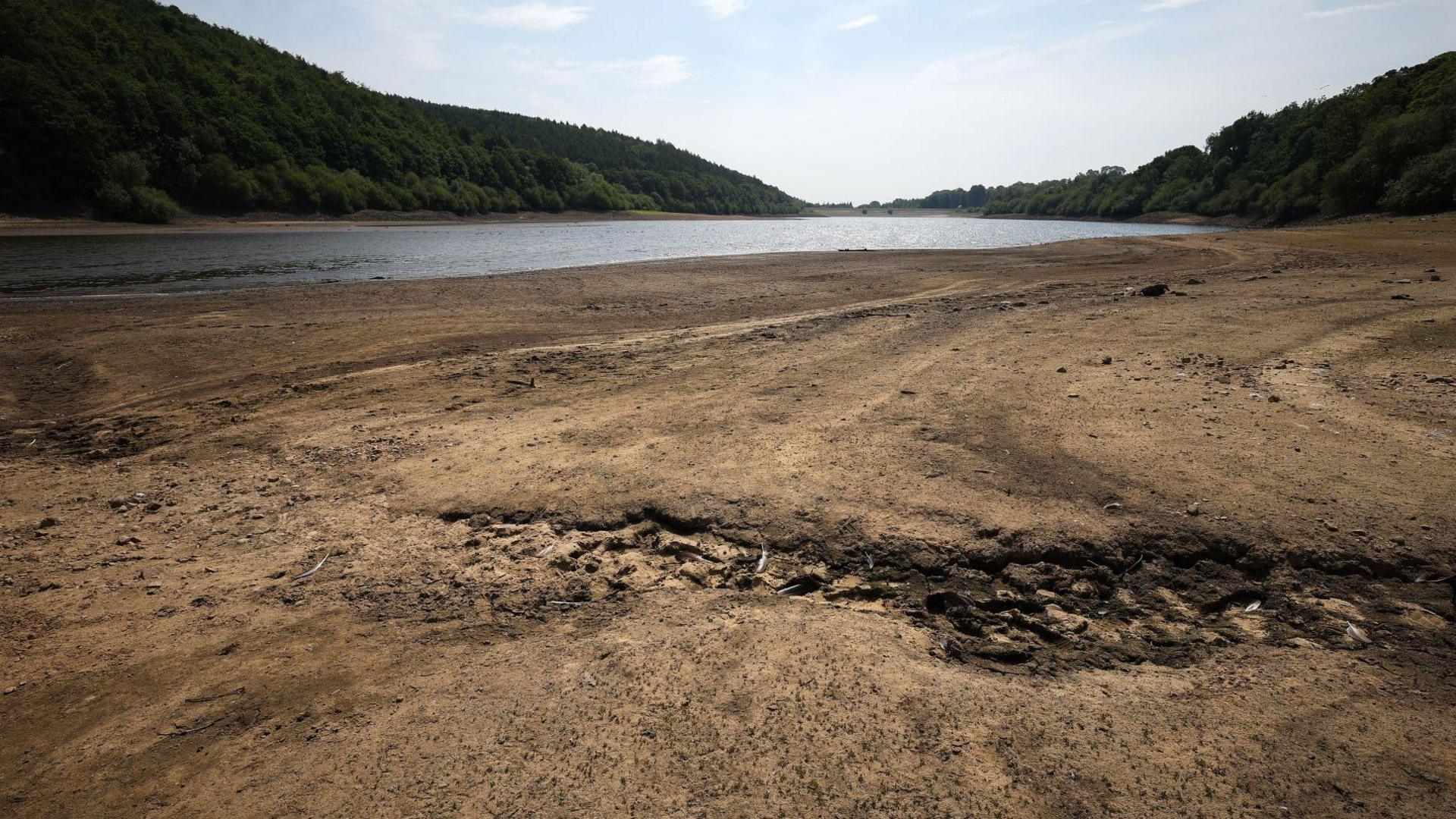
The dry bed of Lindley Wood Reservoir in June
Why don't we build reservoirs anymore?
Building new reservoirs could be "challenging", said a Yorkshire Water spokesperson, in terms of cost, finding suitable sites, planning constraints and the environmental and community impact.
"It is more complicated to build reservoirs now because they will inevitably face a lot of opposition", said Dr Grecksch.
"In the 1950s, big environmental protest groups didn't exist, so there wasn't the big opposition we'd see today.
"They are all controversial, because they're massive, imposing pieces of infrastructure."
The government has already said that plans for seven of the proposed new reservoirs around the country would be designated as Nationally Significant Infrastructure Projects (NSIP), meaning decisions would be made above local authority level.
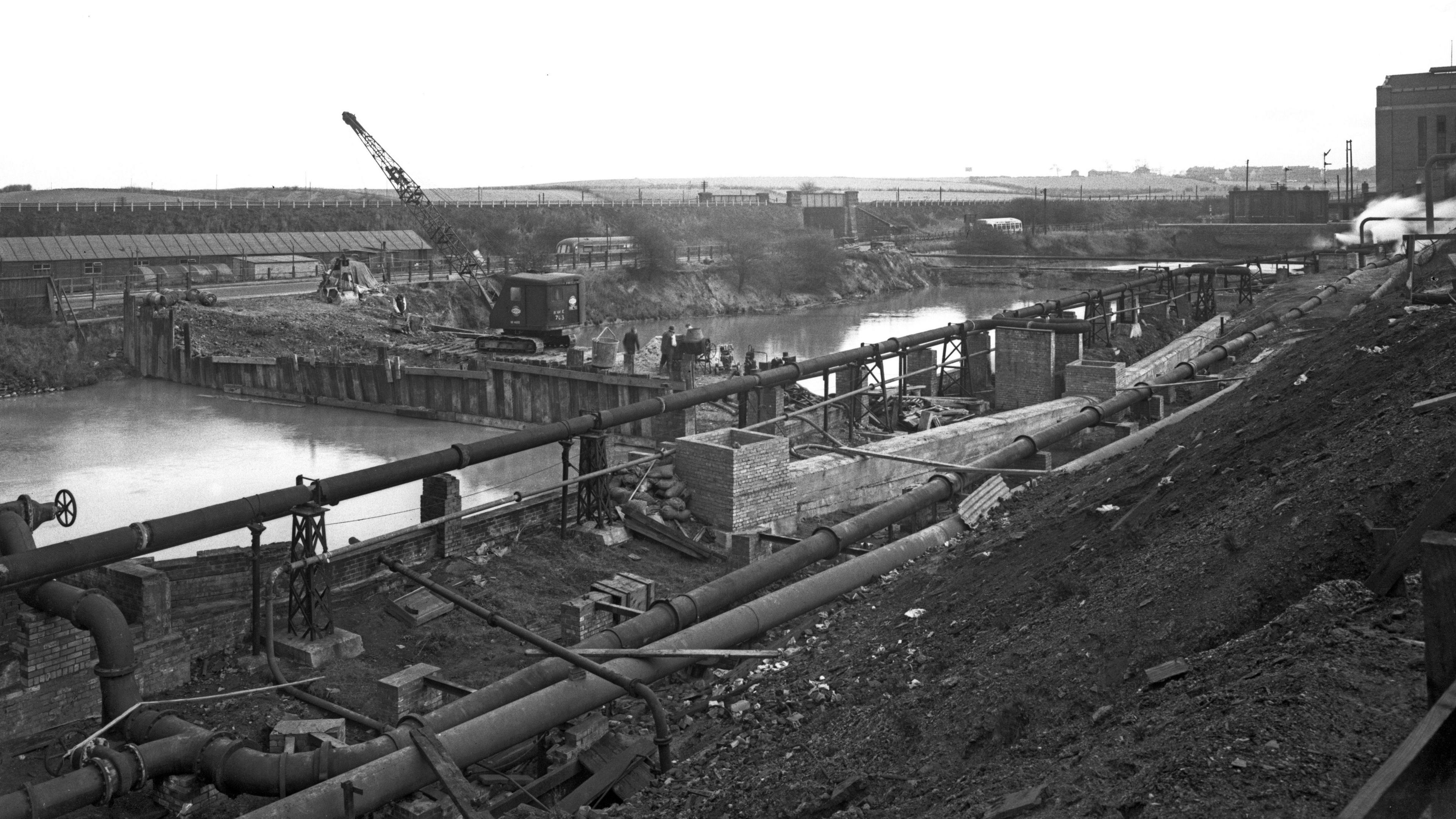
Construction of a reservoir on a colliery site in Manvers, Rotherham, took place in the 1950s
But Dr Grecksch said this process could exclude the public.
"We're in a situation in 2025 where we need to discuss these things with people, and explain why we need it," he said.
Reservoirs are normally built using acts of Parliament, including the Reservoirs Act 1975, which regulates their safety. But the case of the Tryweryn reservoir in Wales, said Dr Grecksch, showed what could happen when the local planning system was bypassed.
When demand for water was growing in Liverpool in 1995, the Welsh village of Capel Celyn was earmarked as the site for a new reservoir to serve the city.
A decade later, the village was flooded and 75 people had to leave their homes, which were submerged along with farms, a school, chapel and post office.
The most appropriate locations for reservoirs are often in upland areas where an existing river valley can be flooded. The Peak District National Park proved ideal for many of them, as they were close enough to supply cities such as Sheffield, Manchester, Nottingham and Leicester.
Transporting water from a more remote area to a population centre can add significant costs.
In the mid-1990s, Yorkshire Water built a new ring main pipe system designed to help supplies flow from the east of the region to the more landlocked and drought-stricken western half of the county.
The network moves both raw water and treated drinking water, according to the company.
But while that measure has apparently been successful, the building of new major reservoirs has stalled.
Do we need any new reservoirs?
We need more water in the UK because we do not have enough, said Dr Grecksch – but reservoirs, he added, were only part of the solution.
He advocates for water reuse schemes, where waste water can be redeployed for agriculture.
"We all need water – it's not about restricting it. We need measures to simply save a little bit of water," he said.
Dr Megan Klaar, associate professor of hydrology at The University of Leeds, agreed that building reservoirs "is one tool in the toolbox".
"We need to build reservoirs to capture water when it does rain, but we also need to think about reusing water much more smartly," she said.
Dr Klaar, who grew up with water rationing in her native California, said she did not think such restrictions would be in place in the UK "in the near future".
But she added: "We need to start preserving the resources we do have, so we don't transition into that reality."

Dr Megan Klaar said reusing existing water has to be made a priority
As an alternative to building new reservoirs, Yorkshire Water has looked at other options, including increasing the use of ground and surface water collection.
"We have been looking at all options for additional water and ways in which we can reduce demand together over the longer term," said a company spokesperson.
The firm was building two new boreholes - large wells dug deep into the ground to access water - the spokesperson added.
They said the company was also building "new water treatment works to support our grid network so we're able to add resilience into our water supply network".
However, they added, these were only short-term measures.
"In the longer term, we're reflecting on the rapid effects of climate change, data centres (which use huge amounts of water), and customer demand increases.
"We'll be thinking and planning for how we can meet the future needs of our customers. One of the options that we will be considering if whether additional reservoirs are needed."
With additional reporting from Spencer Stokes.
Get in touch
Tell us which stories we should cover in Yorkshire
Listen to highlights from West Yorkshire on BBC Sounds, catch up with the latest episode of Look North.

